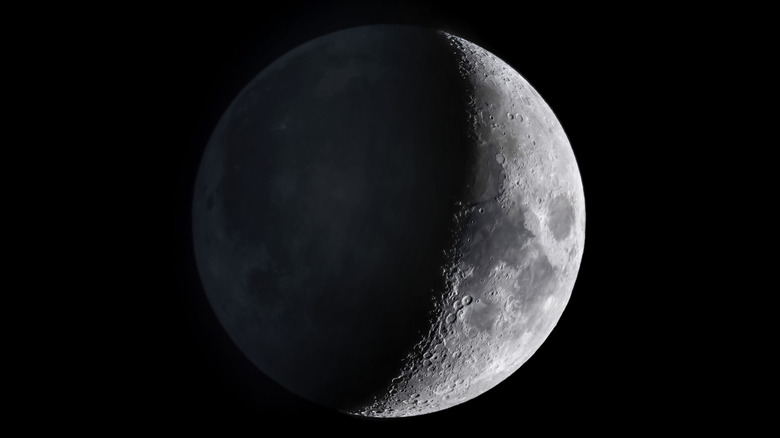The Big Myth About The Moon You Need To Stop Believing
Since the beginning of time, man has been fascinated by the Moon. It's our closest celestial neighbor, so it makes sense for us to be mystified by it as it dances around our planet. It seems that no matter the number of scientific discoveries humans have made about Earth's lone satellite, we've concocted just as many myths. They've become so ingrained into our collective global consciousness that it's sometimes hard to separate fact from fiction.
For instance, some people believe man's one small step onto its surface was falsified, while others still buy into the notion that a full moon drives people crazy (and can turn them into a werewolf) or even that the Moon is made of cheese. That last one was never actually a popular belief, but it has still managed to permeate pop culture in all sorts of glorious ways.
Perhaps the biggest myth involves the dark side of the Moon. And we're not talking about Pink Floyd's magnum opus studio album released in 1973. Though while we're on the subject: The popularity of Pink Floyd's "Dark Side of the Moon" probably didn't do a whole lot to help the public understand the scientifically proven fact that there really is no one single, permanently dark side to our Moon.
Shedding light on the Moon
What we commonly refer to as "the dark side of the Moon" is just the side we never actually see from Earth. According to NASA, we only see the same side of the moon because it rotates on its axis (about every 27 days) at the same rate that it orbits around the Earth (every 27.322 days). Because of this special effect known as synchronous rotation (a form of tidal locking), the moon looks like it remains fixed and still in the sky.
The term "dark side" is also technically inaccurate because that side of the moon gets just as much sunlight as the one we always see from Earth. A better term for the "dark side" of the moon is the "far side." No, not the comic strip by Gary Larson. A former NASA scientist named Dr. James O'Donoghue created an animation that shows precisely how sunlight moves across the moon as it circles the Earth and proves that every nook and cranny eventually gets lit up regularly.
O'Donoghue said in a 2019 Tweet that we can still say "dark side of the moon," but the term they use in astronomy is "night side." At this time, Pink Floyd has not announced any official plans to change the name of their 1973 album.
